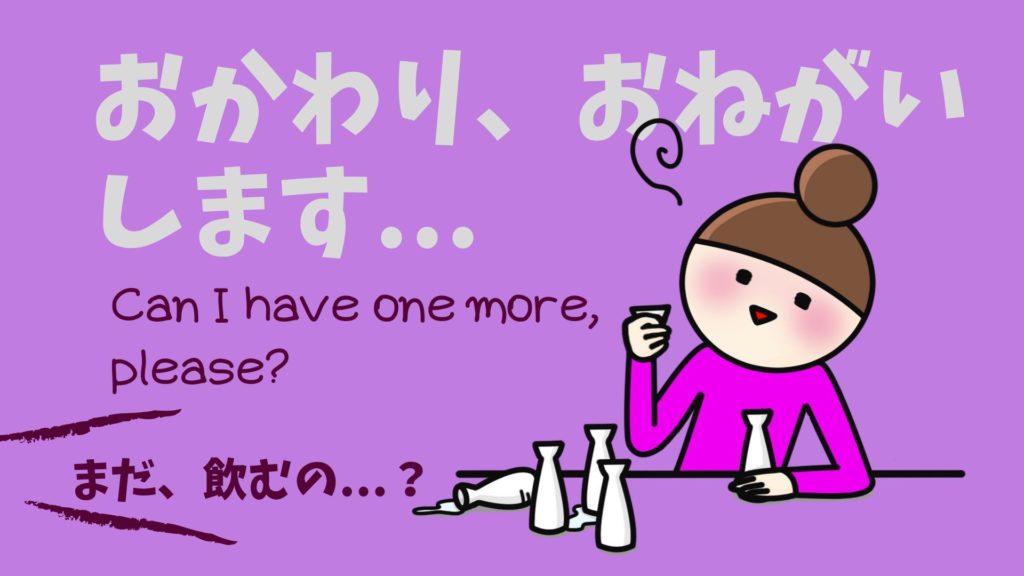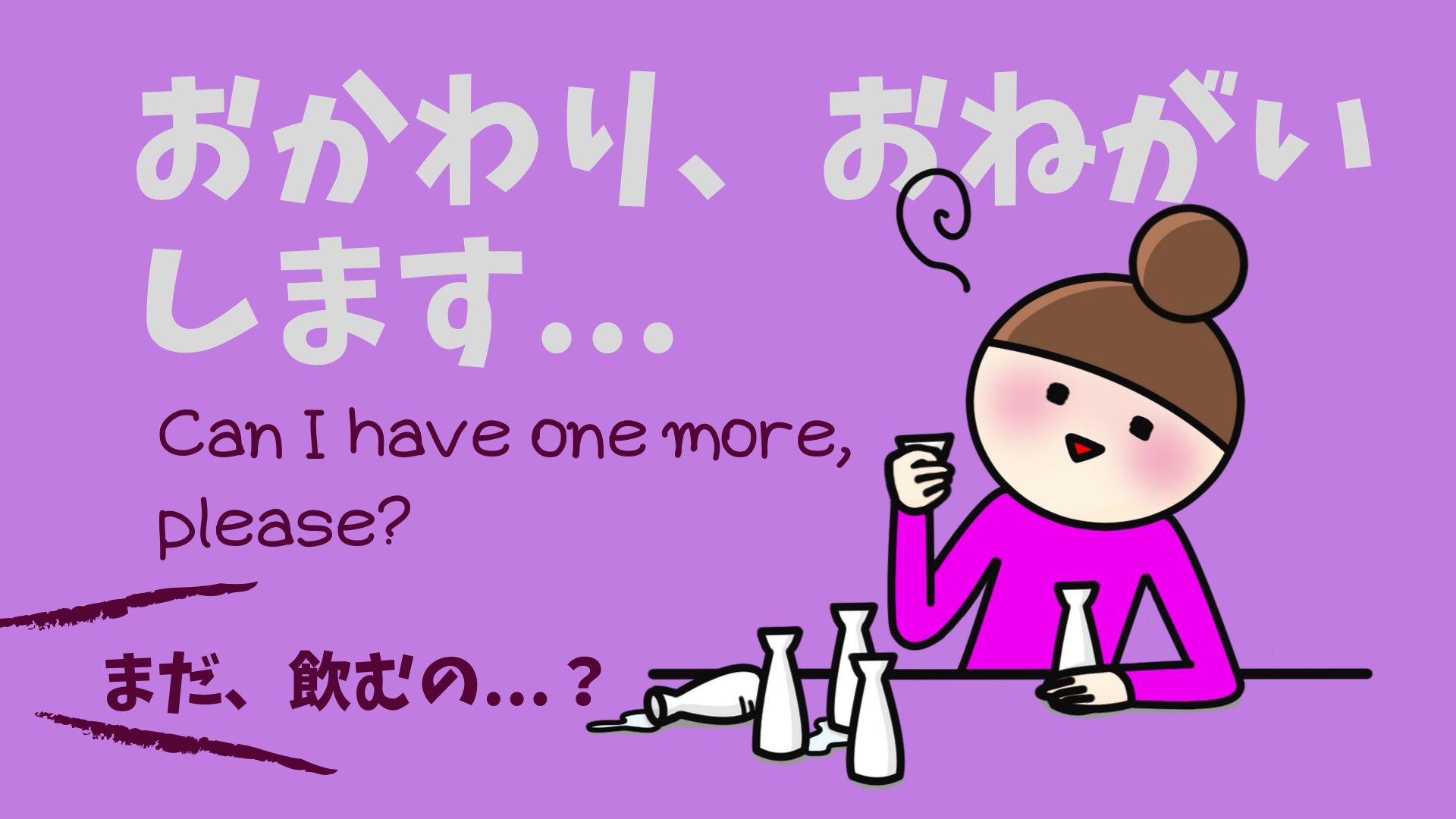Japanese people are very polite, so when you want to ask or order something, you may want to say, “(something), please”. There are two major ways to say ‘please’ in Japanese. Here, I will introduce two of the easiest phrases.
おねがいします Onegaishimasu

Okawari onegaishimasu… Oh no, are you still going to drink some more?
When you want to order food or drink in restaurants or buy something in shops, you can say “(something), おねがいします Onegaishimasu”. ‘おねがいします Onegaishimasu’ is a very polite phrase when you ask somebody something.
Japanese people use this phrase a lot in their everyday conversations. ‘おねがいします Onegaishimasu’ also has other meanings, which I will explain next time.
Please remember, the object which you want should be placed before this phrase. For example,
ビール、おねがいします。
Bi-i-ru, onegaishimasu.
Can I have a beer, please?
‘ビールbi-i-ru’ means beer. It came from the English word ‘beer’, but pronunciation is slightly different. I think that most Japanese people understand the English word “beer”, but if you can pronounce ‘ビールbi-i-ru’ in a Japanese way, you will sound like an authentic Japanese person.
It has a long vowel ‘ii’, and it may be written “bīru” as its pronunciation in other Japanese textbooks.
これ、おねがいします。
Kore, onegaishimasu.
Can I have this, please?
‘これ kore’ means ‘this’. If you cannot read the Japanese menu, you can point to the food photo and order with this phrase.
ください Kudasai
‘ください Kudasai’ is another common way to order or ask something. You need to put the object that you want in front of this phrase too. For example,
醤油(しょうゆ)、ください。
Shouyu, kudasai.
Can I have some soy sauce, please? / Can you pass me the soy sauce, please?
In Japan, people use chopsticks to eat. If you are not comfortable to use them, you can ask somebody;
すみません、フォーク(スプーン)、ください。
Sumimasen, fo-o-ku (supu-u-n), kudasai.
Excuse me, can you give me a fork (spoon), please?
‘すみません Sumimasen’ means ‘Excuse me’. You can say it to get someone’s attention.
The difference between the two phrases
Both ‘おねがいします Onegaishimasu’ and ‘ください Kudasai’ can be translated into “please”, but they are not exactly the same. ‘おねがいします Onegaishimasu’ can be used alone, while ‘ください Kudasai’ cannot exist without other nouns (or verbs).
For example, when someone offers something to you;
コーヒー、いかがですか?
Ko-o-hi-i, ikagadesuka?
How about coffee? (Would you like some coffee?)
You can say;
はい、おねがいします。
Hai, onegaishimasu.
Yes, please.
In this situation, a single ‘‘はい、ください Hai, kudasai’ doesn’t really work. Native Japanese people can understand, but it doesn’t sound natural. ‘ください Kudasai’ needs to be accompanied by a noun.
When you order the same thing again
If you want to have the same drink or food as you just had, you can use the word ‘おかわりokawari’, whatever it is. ‘おかわりokawari’ means something same again, or refill.
So, when you want to another drink or food, you will say either one of these ways ;
すみません、おかわり ください。
Sumimasen, okawari kudasai.すみません、おかわり おねがいします。
Sumimasen, okawari onegaishimasu.
If you want add a noun to specify what you want, you put it before ‘おかわりokawari’;
すみません、ビール おかわり ください。
Sumimasen, bi-i-ru okawari kudasai.すみません、ビール おかわり おねがいします。
Sumimasen, bi-i-ru okawari onegaishimasu.




Comments